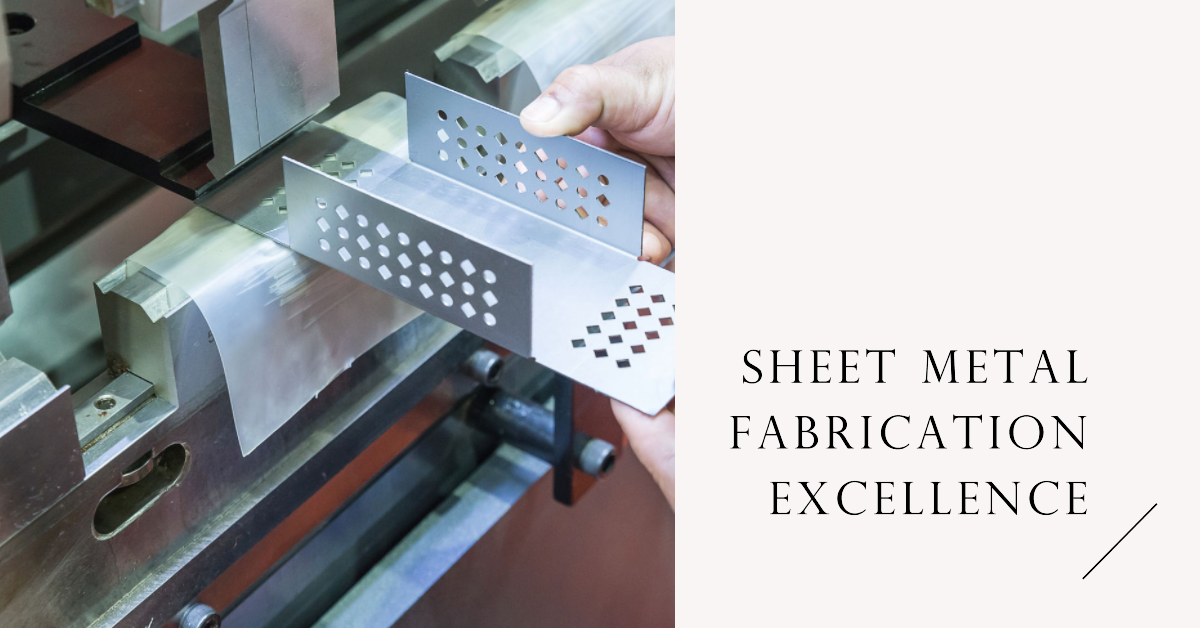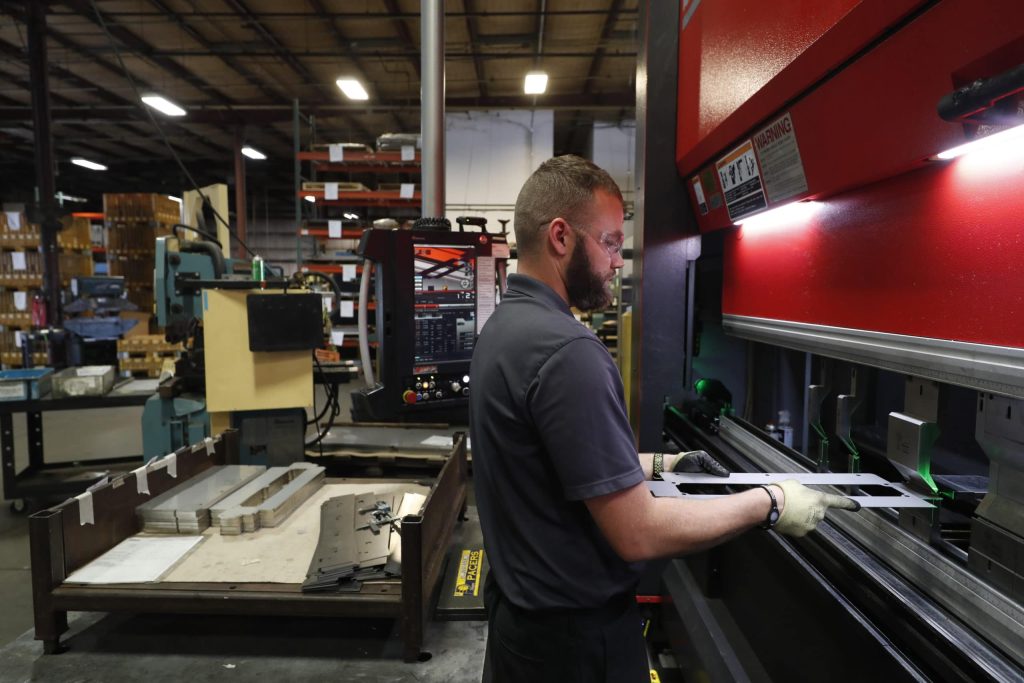Table of Contents
- Introduction to Sheet Metal Fabrication
- The Sheet Metal Fabrication Process
- Advancements and Innovations in Sheet Metal Fabrication
- Applications of Sheet Metal Fabrication in Various Industries
- Best Practices for Achieving Sheet Metal Fabrication Excellence
- How to Choose a Sheet Metal Fabrication Partner
- Future Trends in Sheet Metal Fabrication
- Conclusion: How Precision Drives Industry Success

Introduction to Sheet Metal Fabrication
Sheet metal fabrication is a manufacturing process that involves transforming flat sheets of metal into various shapes and structures. The process typically includes cutting, bending, and assembling metal sheets to create products that are used in a wide range of industries, including automotive, aerospace, construction, and electronics. The growing demand for high-quality, custom-made components has led to the development of numerous fabrication techniques, each with its own unique advantages and applications.
What is Sheet Metal Fabrication?
Sheet metal fabrication is a broad term that encompasses a variety of processes used to manipulate and transform sheets of metal into functional parts and components. These processes can range from simple cutting and bending operations to more complex assembly and finishing techniques. The primary goal of sheet metal fabrication is to create high-quality, durable products that meet the exact specifications of the end-user.
Types of Sheet Metal Fabrication Techniques
There are several different types of sheet metal fabrication techniques, each suited to specific applications and materials. These include:
- Cutting: This involves removing excess material from a sheet of metal to achieve the desired shape or size. Common cutting techniques include shearing, laser cutting, plasma cutting, and waterjet cutting.
- Bending: This process entails deforming the metal sheet along a linear axis to create angles or curves. Bending techniques can be grouped into two main categories: air bending and bottoming. Both methods use press brakes and specialized tools to apply force and shape the sheet metal.
- Punching: In this technique, a punch and die are used to create holes or openings in the sheet metal. The size and shape of the hole depend on the dimensions of the punch and die used.
- Stamping: Stamping is a process wherein a die is used to create raised or indented patterns on the sheet metal. This technique is often used for decorative or functional purposes, such as adding logos, part numbers, or other identifying marks.
- Welding: Welding is a method of joining two pieces of metal together by melting their edges and fusing them with a filler material. This is commonly used in the assembly phase of sheet metal fabrication.
- Assembly: This entails joining multiple sheet metal components together to create a final product. Assembly techniques can include welding, riveting, bolting, or adhesive bonding.
The Sheet Metal Fabrication Process
The sheet metal fabrication process typically involves several steps, from initial design and material selection to cutting, forming, and assembly. These steps are outlined below:
- Design: The first step in the sheet metal fabrication process is the creation of a detailed design or blueprint. This design should include precise measurements, material specifications, and other relevant information to ensure the final product meets the desired criteria.
- Material Selection: Before beginning the fabrication process, it is essential to select the appropriate material for the project. Factors to consider include the material’s strength, weight, corrosion resistance, and cost.
- Cutting: Once the design has been finalized and the material selected, the cutting process begins. This involves removing excess material from the sheet metal to achieve the desired shape or size.
- Forming: After the sheet metal has been cut, it is then formed into the desired shape using various techniques such as bending, punching, or stamping.
- Assembly: The final step in the sheet metal fabrication process is the assembly of individual components. This can involve welding or other joining methods to create a cohesive, functional product.
Advancements and Innovations in Sheet Metal Fabrication
Over the years, sheet metal fabrication has undergone significant advancements and innovations. These include the development of new materials, the introduction of computer-aided design (CAD) and computer-aided manufacturing (CAM) software, and the adoption of advanced manufacturing techniques such as:
- Automation: The use of robots and automated machinery has streamlined the sheet metal fabrication process, resulting in increased efficiency, accuracy, and cost savings.
- 3D Printing: Additive manufacturing, or 3D printing, has emerged as a revolutionary technology in the world of sheet metal fabrication. This method allows for the creation of complex, intricate components with minimal material waste and reduced lead times.
- Laser Cutting: The advent of laser cutting technology has dramatically improved the precision and speed of the cutting process. Lasers can cut through a variety of materials, including steel, aluminum, and titanium, with incredible accuracy and minimal heat distortion.
- CNC Machining: Computer Numerical Control (CNC) machining has transformed the sheet metal fabrication industry by automating the cutting, bending, and forming processes. This technology enables fabricators to produce high-quality, intricate components with unparalleled consistency and efficiency.
Applications of Sheet Metal Fabrication in Various Industries
Sheet metal fabrication plays a vital role in a variety of industries, including:
- Automotive: The automotive industry relies heavily on sheet metal fabrication to produce body panels, chassis components, and engine parts. High-quality, precision fabrication techniques are essential for ensuring the safety and performance of vehicles.
- Aerospace: In the aerospace industry, sheet metal fabrication is used to create aircraft components such as wings, fuselage sections, and engine housings. The extreme precision and durability required for aerospace applications necessitate advanced fabrication techniques and materials.
- Construction: Sheet metal fabrication is integral to the construction industry, where it is used to create structural components, roofing materials, and HVAC systems. The ability to produce custom components quickly and efficiently is especially valuable in this fast-paced industry.
- Electronics: Sheet metal fabrication is critical in the electronics industry, where it is used to create enclosures, heat sinks, and chassis components for various devices. The need for lightweight, durable materials and intricate designs in this industry has driven the development of cutting-edge fabrication techniques.
- Medical: The medical industry relies on sheet metal fabrication for the production of medical devices, surgical instruments, and diagnostic equipment. The high levels of precision and cleanliness required in this industry necessitate the use of advanced fabrication techniques and materials.
Best Practices for Achieving Sheet Metal Fabrication Excellence
To achieve sheet metal fabrication excellence, businesses should adhere to the following best practices:
- Invest in advanced technology: Embracing cutting-edge fabrication technologies, such as automation, CNC machining, and laser cutting, can greatly enhance efficiency, precision, and overall product quality.
- Maintain strict quality control: Implementing rigorous quality control measures throughout the fabrication process ensures that the final product meets or exceeds industry standards and customer expectations.
- Utilize skilled labor: Employing skilled, experienced fabricators is essential for achieving the highest levels of precision and craftsmanship in sheet metal fabrication.
- Prioritize design optimization: Optimizing designs to reduce material waste, streamline production processes, and enhance product performance can lead to significant cost savings and improved customer satisfaction.
- Emphasize continuous improvement: Regularly evaluating and refining fabrication processes, materials, and techniques can drive continuous improvement and foster a culture of innovation and excellence.
How to Choose a Sheet Metal Fabrication Partner
When selecting a sheet metal fabrication partner, businesses should consider the following factors:
- Experience and Expertise: Look for a partner with extensive experience in the industry and a proven track record of delivering high-quality products that meet your specific requirements. Consider their expertise in your particular field and their ability to handle complex projects.
- Technology and Equipment: A reputable fabrication partner should have access to the latest technology and equipment, including advanced software, CNC machines, and automated systems. This ensures that they can handle your project efficiently and accurately.
- Quality Control Processes: Ask about the partner’s quality control processes, certifications, and standards. Look for a partner who adheres to industry best practices and has a robust quality control program in place to ensure the final product meets your expectations.
- Communication and Collaboration: Effective communication and collaboration are critical to the success of any fabrication project. Look for a partner who is responsive, transparent, and willing to work closely with you throughout the process to ensure your needs are met.
- Pricing and Turnaround Time: Finally, consider the partner’s pricing and turnaround time. Look for a partner who offers competitive pricing without sacrificing quality and can deliver your project within your required timeframe.
Future Trends in Sheet Metal Fabrication
The sheet metal fabrication industry is constantly evolving, with new technologies and techniques emerging all the time. Some of the most promising future trends in sheet metal fabrication include:
- Additive Manufacturing: As 3D printing technology continues to advance, it is expected to become an increasingly important part of the sheet metal fabrication process, enabling the creation of more complex and intricate components.
- Smart Manufacturing: The integration of sensors, machine learning, and data analytics into fabrication processes has the potential to revolutionize the industry, allowing for real-time monitoring and optimization of production processes.
- Sustainable Materials: The growing demand for eco-friendly and sustainable materials is expected to drive the development of new fabrication techniques and materials that reduce waste, energy consumption, and environmental impact.
- Customization and Personalization: As consumer demands for customized products continue to rise, sheet metal fabrication will need to adapt to enable the production of more personalized, one-of-a-kind components.
Conclusion: How Precision Drives Industry Success
Sheet metal fabrication is a critical component in the success of various industries, from automotive and aerospace to construction and electronics. The ability to produce high-quality, custom-made components with precision and efficiency is essential for meeting production targets and staying competitive.
As this article has shown, the sheet metal fabrication process involves numerous techniques, from cutting and bending to assembly and finishing. Advancements in technology and innovation have driven the development of new fabrication techniques and materials, enabling greater precision, speed, and efficiency.
To achieve sheet metal fabrication excellence, businesses should prioritize advanced technology, skilled labor, and rigorous quality control processes. Choosing the right fabrication partner is also critical, with factors such as experience, expertise, technology, and pricing all playing a role.
Looking ahead, the sheet metal fabrication industry is poised for continued growth and innovation, with trends such as additive manufacturing, smart manufacturing, sustainable materials, and customization driving the future of the industry. Ultimately, precision and innovation will continue to drive industry success and enable businesses to meet the evolving demands of their customers.
Request a quote today!
[contact-form-7 id="1578" title="Contact form"]
Please compress the file into a ZIP or RAR file before uploading. Alternatively, send through your RFQ by email.
enquires@unitymanufacture.com



